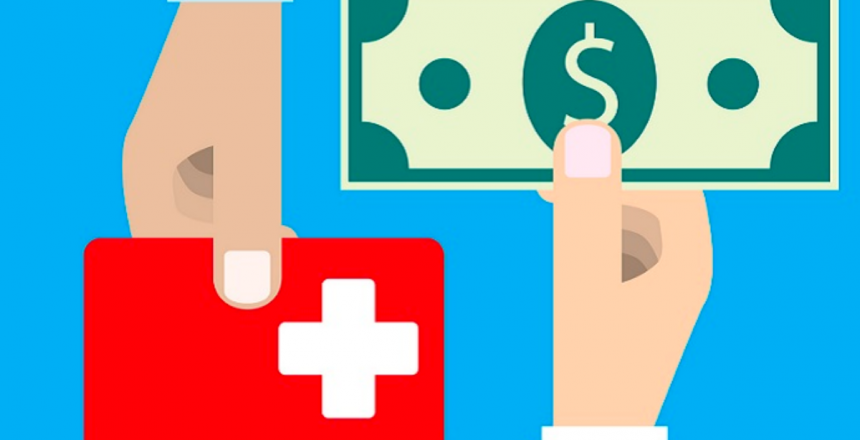A 4-part series on how employers can fix the healthcare system.
Part 1 | Setting the Stage
Let’s talk about why healthcare never seems to get “fixed,” despite the promises of private companies and politicians. Before diving into the messy details, I’m going to state 4 things that all Americans can probably agree on:
1. We all need access to healthcare to promote wellbeing, long life, and acute care when the unforeseen occurs.
2. We agree to appropriately compensate our care providers for the work and research performed.
3. We can limit our need for healthcare with proactive self-care: diet and exercise, etc.
4. We can limit our cost of healthcare through patient-informed and efficient use of our healthcare system.
Do you agree? If so, read on. These four statements are seemingly common-sense, but over the past 41 years, the healthcare industrial complex has spent billions of dollars trying to solve these four simple statements.
How?
Not by providing care. These billions were spent just for perceived cost containment.
How’s that going?
Today, we still depend on the same broken 40-year-old-model, based on provider networks.
My goal in this article is to make the case that price transparency, our latest attempt to fix healthcare costs, isn’t going to help much, if at all. To set the stage, we need to go back to the beginning.
Where did the “modern healthcare system” come from?
In the early 1970s and 1980s, provider organizations (e.g., PPO, HMO) were formed to steer patients to participating providers so insurance carriers would receive a discount. The idea at the time: lower prices in exchange for higher volume of patients.
As these networks pursued growth (and the public demanded broader access) the largest networks swelled to comprise 99% of care providers in many given regions. This quick growth resulted in little-to-no steerage and, resultantly, no price control. Instead, we’ve watched our health insurance premiums increase by 8% – 30% per year for decades.
Compounded, we’ve experienced a 250%+ increase in just the last 10 years.
Even as we’re now paying double for our healthcare, we’ve also seen our patient responsibility increase 1000% when we want to use our health plan. Deductibles that were once $500, are now $2,500, $5,000, up to $8,700 (the 2022 maximum out -of-pocket).
Amazingly, during this 40-year stretch, care providers have not been required to inform the patient of the cost of their service prior to services being rendered. Patients are pretty much blind to the cost when they seek and receive care. The real pain starts when a shockingly high bill shows up in the mail for patient’s responsibility.
This is a problem when the total cost of a four-hour spinal surgery can cost more than a Tesla Model S Plaid ($130,000).
However, most of us don’t care about the total cost. We just want to know; what is my cost? When you receive a medical bill, where do your eyes go? I look at the total cost, shake my head, and immediately look at the bottom of the bill. What’s my cost? It’s a $130,000 bill and I only need to pay $3,000? What a deal!
But is it? Who paid the remaining $127,000?
The real answer: You did.
Most of us have employer provided health insurance. In fact, eighty percent of us pay for healthcare through a group plan sponsored by our employer. So… where did the $127,000 go?
First, $130,000 was not the real price for the procedure. For 40 years, hospitals have agreed to a “network discount” calculated as a percentage-off the top line charge. While other non-healthcare industries offer discounts, it’s typically clear what the end price will be because you know the top line charge.
How is this different for healthcare? Well, in the healthcare industry:
- You don’t know the top line charge. Discount off what?
- You don’t know what other hospitals will charge. What is the right (or best) price?
- Healthcare is an emotionally influenced decision. What is my well-being worth?
- You’re billed post service.
- Your cost is limited to patient responsibility (deductible / coinsurance).
So, how are you paying the remaining $127,000? It’s actually fairly simple.
It’s coming out of your paycheck and eating away at higher take-home pay.
Your employer is rightfully working to maximize bottom-line profit, but healthcare (for the last 40 years) has been chipping away at it. Today, it’s not chipping away, it’s a wrecking ball. Healthcare is the second largest expense (behind payroll) for the majority of service industry employers. This stat holds true for manufacturers if you back-out the cost of goods sold. Your company is simply not going to absorb a 250% increase over 10 years. So, you may have got a raise, but your healthcare payroll deduction eats it up.
Is medical price transparency the answer to our broken healthcare system? Part 2 in this series will explore why new legislation may not do what it is intended to, and why provider compliance is going to be a huge issue.


